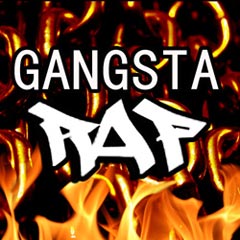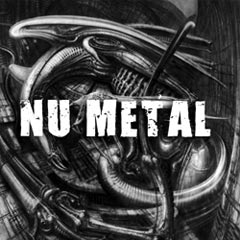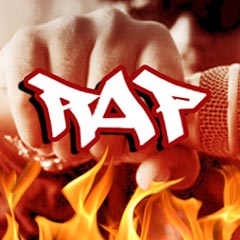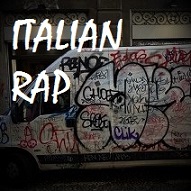Rap
ON AIR - PROGRAMMING
Rivers of Spoken Word: The Story of Rap Music
Rap music has come a long way since its humble beginnings in the lower economic cities around America. Its rise and global reach have connected multiple industries, ranging from fashion, movies, to sports. Combining spoken word poetry with modern beats, rap music is now a beloved genre for many, making it the backbone of the hip-hop subculture. In this blog post, we'll dive deeper into the story of rap music, exploring its most significant artists, defining moments and lasting legacies.
The roots of rap music can be traced back to the African American and Latino communities in the United States. It was these communities that first experimented with combining poetry and rhyme with popular beats. The earliest rappers used simple rhymes and catchy hooks to convey their messages of struggle, resistance, and hope. Artists such as Grandmaster Flash, Kurtis Blow, and Run-DMC were among the first to bring rap to the masses.
With the commercial success of acts such as LL Cool J and Beastie Boys in the '80s, rap music became a mainstream genre. It was during this time that rap music's lyrical power and influence started to emerge. Artists such as Tupac Shakur, Notorious B.I.G, and Jay-Z became some of the most iconic figures in rap music. Through their music, they tackled issues such as crime, poverty, and racism, giving voice to the oppressed.
In the 2000s, rap music continued to evolve, with artists such as Kanye West, Eminem, and Drake pushing the boundaries of the genre. These artists used their music to explore their personal struggles, reflecting the complexities of modern life. With the advent of social media, rap music became more accessible than ever before, with new artists being discovered and promoted online.
Today, rap music has firmly secured its place as a global phenomenon, influencing popular culture around the world. From fashion to movies, sports to politics, rap has shaped the way we think and see the world. Its power lies in its ability to unite people from all walks of life, creating a sense of community and shared experience.
The story of rap music is a story of creativity, struggle, and triumph. Its roots may have been humble, but its impact on popular culture has been enormous. Through its powerful beats and poetic lyrics, rap music has given voice to the oppressed, challenged our assumptions, and brought us together as a community. As we move forward, it's certain that rap music will continue to evolve, inspiring new artists and pushing the boundaries of what we think is possible in music. So next time you hear a rap song, take a moment to appreciate the artistry and passion that went into its creation. Who knows, you may just discover a new favorite artist or song, and join the millions of fans who have been moved by the rivers of spoken word.
Want to listen to the latest rap songs? Look no further – we've got the biggest, newest tracks all in one place.
New rap songs | Listen to the latest hits here
Dance With The Devil
Forever Humble
Risk Taker
Rewind
Doin Yo Stuff
Rap scene, features and brief history
Towards the end of the ‘70s, musicians like DJ Kool Herc and Afrika Bambaataastarted started to entertain street parties with their sampling of funk, reggae, jazz, R&B and disco music songs. As the popularity of this genre grew, the MCs started to sing over the sampled music with their skillfully crafted rhymes to attract people to the party. They usually invited people to dance, or told short anecdotes, an art soon to be known as rapping.
The discographic boost first came with the Sugarhill Gang’s first album in 1979, an event that contributed to the diffusion of this relatively new genre throughout NY’s cultural scene during the next ten years. Then, in 1985, the Golden Age of rap began. Run-DMC became the first mainstream band with their essential style, added with powerful guitar riffs. The genre rapidly developed, drawing on its roots, singing explicit lyrics of violence and social denounce.
In 1986, the first white rap group reached the top: the Beastie Boys. Coming from a hardcore punk background, the band published Licensed to ill, demonstrating that rap music had become a universal language. At the beginning of the ‘90s, the rap scene was all gold chains and showing off. The Public Enemy gave a healthy shock to the genre wearing alarm clocks around the neck and writing about Malcom X, Islam and politics. The violent social reaction brought by this period’s lyrics was followed by a quieter moment when old gangsters became peace supporters. The teachings of these rappers were not fully understood, at least among the artists. In the ‘90s the famous West Coast - East Coast rivalry brought to the death of Tupac Shakur e The Notorious B.I.G., respectively in 1996 and 1997.
In recent years rap has been represented by important artists as Dr. Dre, Snoop Dogg, Eminem, 50 Cent, Busta Rhymes and many others, who sold million copies worldwide. Many of them are major label superstars, but still many minor recording studios are thriving in the genre’s underground, proving how this music is deeply rooted in US’s soul.
Battle Rap
Songs as a form of social redemption. We talk with Mico Argirò
What are you thinking about?







